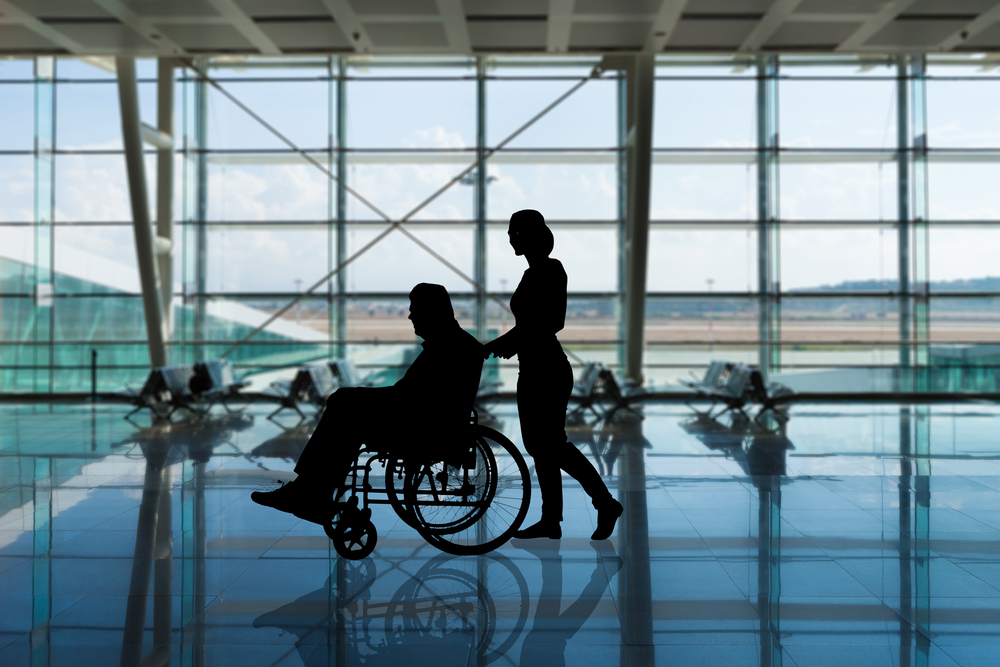Community applauds decision, but says ultimate goal is to be able to fly in their wheelchairs.
Seven years after Tim Rose was denied access to an Air Canada flight because of the size of his power wheelchair, the Canadian Transportation Agency ruled the country’s largest airline needs to do more to accommodate passengers with mobility devices.
Rose, who lives in Toronto, was planning a trip to Cleveland, Ohio, in 2016 to give a presentation on disability awareness and big business. When he tried to book his flight over the phone, Air Canada said his wheelchair — a device custom designed for his body that provides him with his independence — was like a piece of oversized luggage: if it didn’t fit, it didn’t fit. As a result, he had to drive.
With the help of ARCH Disability Law Centre, Rose took the case to the transportation agency, a quasi-judicial tribunal that makes decisions related to federally-regulated transportation.
The tribunal ruled that if Air Canada receives at least 21 days notice that someone’s wheelchair won’t fit on a plane, the airline must find a way to transport the passenger and their wheelchair on the day they wish to travel. If that’s not “reasonably possible,” the Aug. 11 decision says the airline must accommodate them the day before or after.
“I was floored,” Rose said of receiving the ruling after years of litigation.
During the hearing, Air Canada argued that Rose was the only person who had been refused transport because a plane travelling across the border couldn’t fit their wheelchair.
Rose was most pleased to see the agency recognize that what happened to him wasn’t an isolated problem.
In its decision, agency members Elizabeth C. Barker, Heather Smith and Mary Tobin Oates wrote that Air Canada has effectively created inaccessible routes as a result of its equipment purchases and planning decisions.
“That is incredibly powerful,” Rose said.
Ruling might require airline to switch planes to accommodate wheelchair users
As a result of the ruling, the airline will have to find passengers with wheelchairs that don’t fit on select airplanes a similar flight in its own network or with another carrier that can accommodate. If Air Canada books passengers on another carrier, it will need to pay the price difference.
If those options won’t work, Air Canada will need to change the airplane it intends to use for the flight, swapping it with one that can accommodate the wheelchair.
The airline has been ordered to implement the measures no later than Dec. 20.
A spokesperson for Air Canada said the airline is reviewing the judgment.
“This includes evaluating its extremely complex requirements that we substitute aircraft on an ad hoc basis and what effects this would have on other customers and our regular schedule and operations,” Peter Fitzpatrick said via email.
Community happy with ruling, but says still work to be done
Others in the disability community are glad to see the ruling in Rose’s favour, but say other problems persist when it comes to flying with a wheelchair — including damage when the custom devices are in the cargo hold.
There is one solution to many of the issues mobility device users face when travelling by air, said Maayan Ziv, a disability advocate and founder and CEO of AccessNow, an app that helps people find accessible places.
“If Tim was allowed to board a plane just like any other customer and stay in his mobility device, these issues wouldn’t continue to happen,” she said.
“We can get on boats, on taxis, we can get on the subways and on buses and stay in our mobility devices. It is only when we travel by air that we are forced to be separated by them,” said Ziv.
A year ago, she found herself stranded in the Tel Aviv airport because her wheelchair was broken beyond repair during an Air Canada flight.
At the time, Air Canada told CBC Toronto it did not meet its “normal service levels” while flying Ziv and said the company arranged for a specialized wheelchair service to fix the damage.
For wheelchair user and avid traveller Victoria Lacey, the ruling could have a big impact. She says her family has gone as far as switching vacation destinations to find a plane that can accommodate her chair.
Like Ziv, she hopes airlines will make it possible for people to board flights in their chairs.
“Having to stay outside of my wheelchair for the duration of a flight is very stressful on me. It’s very painful for me,” said Lacey, whose chair is custom made to support her body and breathing. “I do it because I love travel and I want to see the world.”
Prototypes in the works
There is hope on the horizon, Lacey and Ziv say.
In June, Delta Airlines debuted a prototype seat that would allow passengers to stay in their wheelchairs for an entire flight. The prototype was developed with Air4All, a British accessible air travel company, and demonstrated at the Aircraft Interiors Expo in Germany.
The seat, which the airline says is the first of its kind, is a standard airline seat that can essentially be stowed so someone can sit there in their wheelchair, complete with an adjustable headrest, tray table and cocktail table.
Ziv says flying in a wheelchair will happen — it’s just a matter of time and effort.
“It comes down to cost. It comes down to political will,” she said. “And it comes down to recognizing that people with disabilities today are not treated fairly when it comes to air travel.”
Source: CBC

